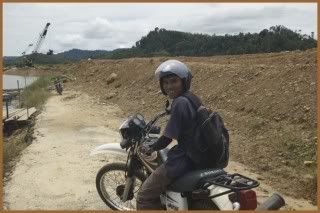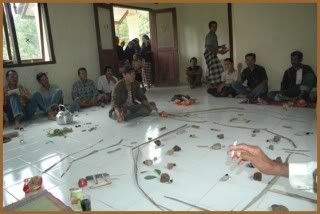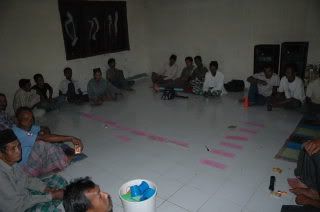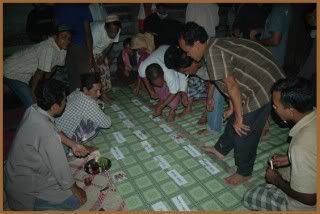
Through our initial survey work, we discovered that many of the out lying areas - those not technically within the tsunami effected areas - were the hardest off. They had been decimated by 30 years of conflict and, because of their location outside of the tsunami effected area, had received very little help. Ironically most of the people in these villages fled to the coast when the fighting in the mountains grew too intense. On the coast, many died in the tsunami. Those who survived often choose to move back to their original communities were they have received very little help.
After the initial survey work, we decided to partner with one of these outlying communities. It was hard to reach due to downed bridges and generally poor road conditions, but it was doable. We knew that poor access meant the large organizations weren't interested in working there.
Early on we spent a lot of time visiting with the Pak Kecik (village chief) and other community members, building friendships. The Acehnese are very hospitable - a casual stroll through the community almost inevitable resulted in an invitation in to someone's home for a cup of strong, sweet coffee.

As the community grew comfortable with us, we initiated a series of meetings to create "social maps."

A social map is a map of the village created by community members using locally available materials. It was fascinating to see how using this method (outlined by Robert Chambers) allowed everyone, both literate and non-literate to participate. The thing I enjoyed the most was that, five minutes into it, the people were so engaged I could have left the room and they would hardly have noticed. The social mapping process was invaluable to us as outsiders because it provided a window into the life of the community and what they valued.
After completing the social maps, we organize meetings to discuss strengths and weakness in the community again using a participatory approach. In these pictures, community members are identifying and placing beans next to high priority needs in their community:


Through these activities, and many other informal discussions, we were able to identify several areas in which we could partner with the community.
CLICK ON THE LINKS ABOVE TO SEE THE PROJECTS THAT ARE UNDER WAY NOW.